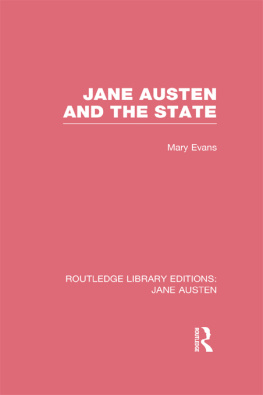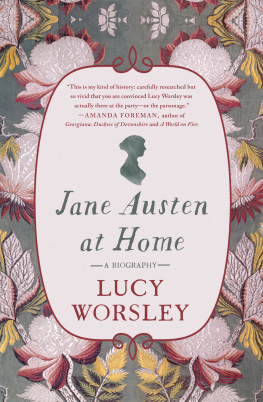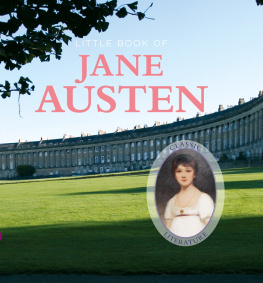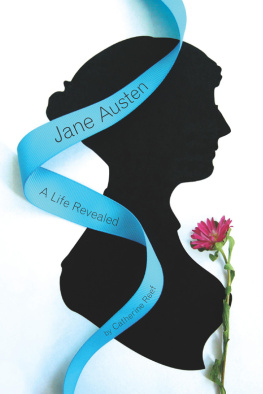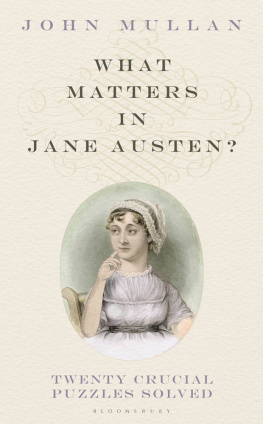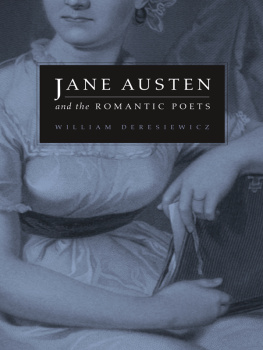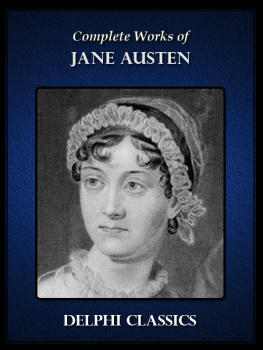The Story of
JANE AUSTEN
The Story of
JANE AUSTEN
The Girl With The Golden Pen
__________
By Gill Hornby
First published as Who Was...Jane Austen in 2005 by Short Books Unit 316, Screen Works, 22 Highbury Grove, London N5 2ER
Republished in hardback as part of the Great Lives series in 2017 by Short Books
This ebook edition published in 2017
Copyright Gill Hornby 2005
The right of Gill Hornby to be identified as author of this work has been asserted in accordance with Section 77 of the Copyright, Designs and Patents Act 1988
This ebook is copyright material and must not be copied, reproduced, transferred, distributed, leased, licensed or publicly performed or used in any way except as specifically permitted in writing by the publishers, as allowed under the terms and conditions under which it was purchased or as strictly permitted by applicable copyright law. Any unauthorised distribution or use of this text may be a direct infringement of the authors and publishers rights, and those responsible may be liable in law accordingly.
ISBN: 978-1-78072-337-2
Cover illustration Evie Dunne
Cover design by Daniella Shreir
For Holly, Charlie, Matilda and Sam
With love.
CHAPTER ONE
E verybody knew everybody else in Chawton; it was that kind of village. And soon after the new people moved into the old bailiffs cottage in 1809, everybody thought they knew everything about them, too.
They knew that old Mrs Austen was good for her age. She must have been seventy not a tooth left in her head! but she was up every morning feeding the chickens and down on her poor knees all day digging the vegetables. She was a nice enough sort, it was agreed. Always complaining about one ailment or another, but cheerful all the same.
They knew that her husband had been dead for a few years, but her five boys had all done well for themselves, and were very good at looking after their dear old mama. Indeed, the gentleman from the big house was one of her sons and he had given her the lease on the cottage.
And they knew that she was not alone. She had her two daughters living there, looking after her. Neither of them had married poor things! though they were nice-looking girls once, you could see that. And they had that other nice spinster, Martha Lloyd, there too. She was as poor as a church mouse, apparently: left with nothing when her mother died. The word was that if the Austens hadnt taken her in, she would have ended up a governess
So, the villagers watched the four ladies going about their daily business. They saw that they lived smooth and ordered lives. Miss Cassandra ran the house with the utmost efficiency. In their spare time, Cassandra was always painting or drawing (she was a considerable artist) and Miss Jane would play on her pianoforte (she was a pleasing, though undistinguished, musician). The villagers would glimpse the ladies, in their candlelit window on a winters afternoon, at their needlework. They saw them go to church every Sunday, and visit the poor. They noticed that the only gentlemen callers were their many brothers and legions of nephews, and that sometimes the two sisters would go off on long visits to them. They could see that they were well into their thirties, had given up all hope of marriage, but were extremely close to one another. They knew that mother and daughters all lived together in quiet harmony and contentment. So they did know most of it.
There was just one small fact that was kept from the villagers of Chawton. And that was that quiet Miss Jane was a writer. Indeed, she was a great writer: one of the greatest certainly the greatest woman writer in the English language.
Jane Austen went to great lengths to keep her own secret. Every morning, she would rise before the others, practise her piano and prepare the breakfast. She would then settle down in the dining room, at her small, delicate, writing table. And it was here that, on little pieces of paper, in the tiniest handwriting and, with no great show of effort, she produced some of the finest novels ever written. In just eight years, she revised Pride and Prejudice, Sense and Sensibility and Northanger Abbey; she wrote Emma, Mansfield Park and Persuasion. By the time of her death, they were all runaway bestsellers, enjoyed by everybody from the Prince Regent to the ladies of the local lending library. And yet only her family and dear Martha Lloyd knew that she had written them.
Jane relied on the dining room door to warn her of anybodys approach. At the sound of its creak, she would quickly slide the paper under the blotter so that nobody saw what she was up to. Many of her neighbours were her most avid readers. But they had no idea that their author lived among them.
CHAPTER TWO
J ane Austens brilliant, short life began at another Hampshire village several miles to the north of Chawton, called Steventon. In 1775, just thirty-eight families lived there, most of them in the tiny thatched cottages which straddled the village green. On a summers day, when their low front doors were open, you could see the women within, working at their spinning wheels.
At the top of the hill sat the small, plain church of St Nicholas, with the big old manor house beside it. And at the bottom, somewhere between both church and village and settled in its own fields, was the Steventon Rectory.
The Reverend George Austen and his wife had moved into the village three years before. The manner of Mrs Austens arrival had made quite an impression. Although she had not been well at the time quite unable to get up from her bed she had not wanted to miss the move. And so it was that the Rectors wife had appeared among the people of Steventon reclining on a mattress, which was balanced on a pile of possessions wobbling atop a donkey cart!
George Austen was a handsome, clever, charming man. He loved his family and his congregation loved him. His wife (named Cassandra, like her eldest daughter) was slightly grander than him: she did like to remind people that her grandmother was the sister of a Duke. But, once married to George, she took their constant lack of money in her stride. Two years after her wedding, she still had no other daytime dress than the plain red frock she had been married in.
The Steventon Rectory was a far humbler home than Mrs Austen was used to. It was a basic building, dingy within and horribly prone to damp. There were three main rooms downstairs and seven bedrooms up, plus three low-pitched attics. It sounds big enough, but the Austens were breeding fast.
By 1775, they were already the proud parents of five boys James, George, Edward, Henry and Francis as well as their little daughter Cassy. As a rule, the family did not use its imagination much when it came to girls names. They all tended to be Cassandra or Jane, with the occasional Philadelphia thrown in. So when, on 16th December, their seventh child was born a girl, Jane she became. (Which was just as well, given how famous she was to become: Philadelphia Austen is a bit of a mouthful.)
It was a harsh winter that year. The snow fell, heavy, thick and then froze. With February came floods, and the local lanes were impassable. Mrs Austen and her new baby snuggled together in the fug of the four-poster upstairs, and didnt come down for weeks. The boys appeared, chatting, in the bedroom from time to time, and little Cassy then just three liked to stay close to her mama. But somehow, the busy household got along without her. It was the fifth of April 1776 before the weather was fine enough for the infant Jane to be carried up to the Steventon font for baptism by her father.
Cassandra Austen was a devoted mother to her large brood, but she was like a lot of women of that time a little brisk with them. She nursed them all until they were three months old, but once they were weaned and eating solid food, they were out. All the Austen children were farmed out to a woman in the village. One or other parent would visit the infant every day; they did not cut them off. But the rule was that the children were not brought back to the family home until they were able to walk, talk a little and wear proper clothes.
Next page



